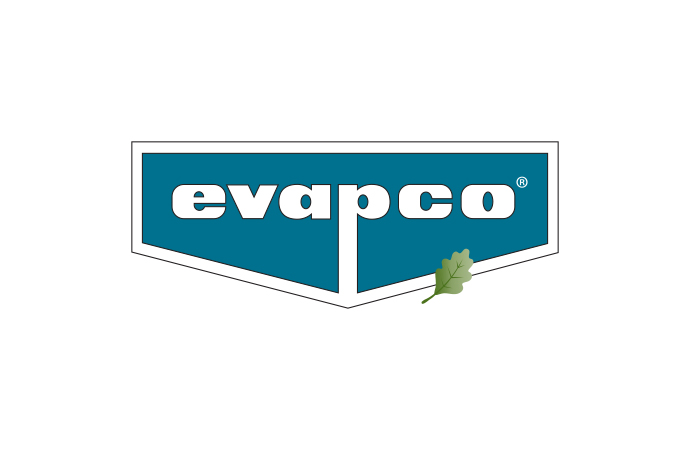In light of ambitious greenhouse gas emission reduction targets in California, electricity supplier Southern California Edison (SCE) is making natural refrigerants central to its plans by evaluating the energy savings delivered by natural-refrigerant technologies. Through the state’s Refrigerant Management Plan, senior engineer at SCE Paul Delaney explains in the latest edition of Accelerate America how the utility plans to implement meaningful change.

In 2006, the state of California passed Assembly Bill (AB) 32, which in essence, requires California – which has the eighth largest economy in the world and the largest of any U.S. state – to reduce its greenhouse gas emissions to 1990 levels by 2020. This would cut emissions generated under a business-as-usual scenario by 15%.
One of the ways California is achieving this reduction is by implementing its Refrigerant Management Plan that requires commercial and industrial refrigeration operators that use high-GWP refrigerants to better control their refrigerant leaks. The Plan, launched in 2011, is managed by the California Air Resources Board (CARB), and currently applies to facilities with refrigerant charges greater than 200 pounds. Next March, the threshold will drop to 50 pounds.
The focus on cutting greenhouse gas emissions, in part by controlling refrigeration leaks of high-GWP refrigerants, has sparked interest in the Golden State in refrigeration systems that use low-GWP gases. Therefore the wider adoption of natural refrigerants has attracted the attention of the state’s power utilities, which are always interested in reducing the amount of energy consumed so that they can affordably provide a sufficient amount of power.
“The California Refrigerant Management Plan and AB32 have caused businesses to look at alternative refrigeration systems,” said Delaney, senior engineer for SCE, the primary electricity supplier for much of Southern California - serving 50,000 square miles (80,467 km2) and nearly 14 million people.
Because California is also in the midst of a major drought, SCE is particularly interested in systems that both improve efficiency and conserve water. EVAPCO, for example, markets an air-cooled low-charge ammonia system that consumes no water.
Delaney works in SCE’s New Product Development & Launch (NPDL) group, whose function is to provide alternatives to energy customers that reduce energy consumption and cut demand during peak periods. “We’re constantly looking for ways to reduce costs,” he said.
Delaney’s NPDL group manages two buckets of funding – one for emerging energy-efficient technology and one for emerging technology that helps end users limit peak demand, when rates are highest. “My specialty is process loads, which includes refrigeration,” he said.
If natural-refrigerant systems pass the test in terms of energy efficiency they then qualify for monetary rewards (incentives) from the utilities, which in turn, helps end users afford these systems. It is hoped this will spur uptake whereby incentive-driven investments in natural-refrigerant systems lead to more production, lower prices and more sales of the technology.
Though utilities are often criticised for drawing out the incentive process, “our goal is to provide incentives as soon as we can,” said Delaney. “If we can do this faster, while maintaining the level of rigour that we need, that would be best by far.”
The California Public Utilities Commission (PUC) and California utilities have developed a Database for Energy Efficient Resources (DEER), which provides well-documented estimates of costs as well as energy and peak-demand savings associated with particular types of technology. “If (a technology) is in the database, that makes it easier (to give incentives),” said Delaney.
Importantly, SCE does not take manufacturer’s efficiency claims for their refrigeration or HVAC systems at face value, always seeking third-party validation. SCE doesn’t endorse particular technology vendors. But SCE does do research on behalf of manufacturers and promotes the adoption of equipment that meets energy-efficiency parameters.
“If we can help technology companies find more customers and build more equipment to really transform the market, that would be the panacea for emerging technology,” said Delaney.
Labs delivering live-store efficiency tests for end users
The first step in NPDL’s analysis of new technology is usually to test it at SCE’s Technology Test Centers in California or other labs. The Test Centers can simulate environmental conditions for eight climate zones as well as the conditions in a supermarket, cold storage warehouse or walk-in cooler.
The lab plans to test a self-contained freezer case using the natural refrigerant propane (and potentially butane, isobutane and CO2) for a major supermarket chain comparing the technology to HFCs. NPDL also evaluated an ultra-low-charge (under 500 pound/227 kg) ammonia system from NXTCOLD, which is installed as a retrofit at an existing cold storage facility operated by Lineage Logistics in Oxnard and another in Long Beach, that would have otherwise used a flooded system with 22,000 pounds (9979 kg) of ammonia. SCE is also validating how well low-charge ammonia systems can reduce peak demand consumption at Oxnard and Long Beach.
SCE was able to create a model, using a traditional flooded ammonia system as a baseline, which estimated that the energy savings for the Lineage’s Oxnard low-charge ammonia unit is 15%-17%.
After the low-charge ammonia systems at Lineage’s Oxnard and Long Beach facilities are fully evaluated, SCE will be able to use those results plus information on traditional ammonia systems to provide estimates of energy efficiency for low-charge applications to other cold-storage facilities.
“Every week, I’m getting more and more calls from people who want to know what we’re doing with low-charge ammonia and when we’re going to have data on it ready to go,” said Delaney.
SCE’s evaluation of low-charge ammonia is starting in cold-storage warehouses, but Delaney expects the technology, sometimes using a secondary fluid like CO2, to eventually be applied to supermarkets, ice rinks, and other facilities. “We’re looking at using Mayekawa’s NewTon ammonia-CO2 unit for simple walk-in retrofits at supermarkets,” he said.
Some companies are interested in how low-charge ammonia can be used to cool office space. “That’s ahead of the curve, but to me it’s a big market for this,” he said.
PG&E rewards US cold for energy efficiency
In 2005, United States Cold Storage became one of the first public refrigerated warehouse companies to install an ammonia/CO2 cascade refrigeration system at a new facility in Pennsylvania and now the system installed in 11 of its facilities.
In 2009 Pacific Gas and Electric (PG&E), as part of its Emerging Technologies Program, evaluated the performance of the system over a five-month period at a US Cold Storage warehouse in Fresno, California, and as a result of its findings provided US Cold Storage with an energy incentive.
“Considering the entire refrigeration system energy usage for the facility examined in this study, a cascade (NH3/CO2) system is approximately 5.8% more efficient than an optimally designed and controlled conventional two-stage ammonia system operating at the same conditions,” said Charles Toogood, vice president of business development for M&M Refrigeration, and vice president of engineering for US Cold Storage at the time of the study.
Download Issue 6 of Accelerate America here
Download Issue 6 of Accelerate America here
MORE INFORMATION
Related stories





